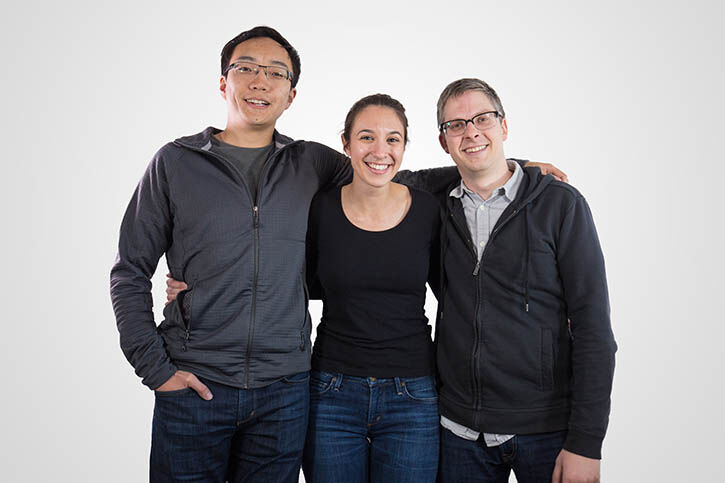
Coding Game for Children Takes Alums from SAIC to Silicon Valley

by Brontë Mansfield (MA 2017)
Wander into your neighborhood Apple Store, and between the sleek rows of Macbooks and iPhones, you’ll find something a little more playful: an iPad game kit called Osmo Coding, the brainchild of an SAIC alum and the youngest hardware designer to have her creation in the Apple Store.
In 2013, Ariel Zekelman (BFA 2016) took a course called Data Viz Collaborative. The class was a collaborative effort between SAIC and Northwestern, and it was there that Zekelman met Northwestern student and future business partner Felix Hu.
Zekelman and Hu were approached by Professor Michael Horn, who was involved in researching tangible interaction design for children. Horn suggested the duo experiment with creating a programming environment for children.
“There are a lot of studies that show kids learn better with their hands,” Zekelman explains. Computer coding is very conceptual, and without physical objects to illustrate how coding works, teaching such an abstract concept to children can be difficult. “Our job was to bring the abstract, the conceptual into the physical to help kids learn,” says Zekelman.
Zekelman and Hu designed a game centering around a cute monster named “Awbie,” who wanders around in search of “strawbies” to eat. Children use blocks to move Awbie through the game world, placing the blocks on any surface in front of the iPad, where Osmo’s unique front-facing camera captures the action. Each block is a command—walk down 2, walk over 3, use tool X—to teach children how to think in sequences, just like they would when coding on a computer. View how Osmo Coding works.
For help designing the perfect character, the pair turned to another SAIC alum, Eric Uchalik (BFA 2008). “When they first approached me, their game looked a little bad,” Eric laughs to nods of agreement from his collaborators. Uchalik’s background is in character illustration and toy design. When they spotted his work on SAIC’s Behance Alumni portfolio, they knew he would be a great fit.
The team worked on the game on the side, spending weekends outside of their jobs and school to bring the project to life. Then, they sent it to a Silicon Valley app company called Osmo. After being flown out to California to show the company their product, the team was hired. In winter of 2016, they packed up their Chicago lives and moved across the country to Palo Alto. For Zekelman especially, the change was shockingly quick: “I had my final critiques and left the day after for California,” she recalls.
The team still seems a bit shocked at their success. “I am thoroughly excited when I see the game physically in the Apple store,” Uchalik says. “The team of really talented people at Osmo brought great packaging; our industrial design is through the window; the graphics are bright and colorful. It’s not just a digital download; it’s a physical experience.”
When Zekelman encounters the game on a shelf, it is a special honor. The interlocking plastic blocks that kids use to direct Awbie—the blocks that are quietly teaching a new generation of computer programmers and web developers—were not only dreamt up in an undergraduate course at SAIC. They are the blocks that made Zekelman the youngest hardware designer in Apple Store history.
